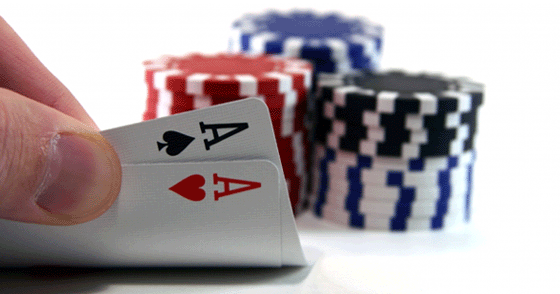There a few things that players tend to hate about Texas Hold’Em across the board, and one of the most hated components of the game would have to be the blinds. Yes, we all hate having to put our money in the pot. If you’re not careful, the blind can really eat up all of the money that you wanted to put in the pot. If you’re also unaware, players can use the blinds against you. You might go ahead and jump into a pot, just because you paid for it already. Sometimes it’s better to go ahead and fold even when you feel like you might have a chance. Since poker is also a game of math, it means that you need to ensure that you really aren’t just throwing your money away pot after pot. It can be better to cut your losses than it would be to try to figure out how you’re going to overcome pot odds when you don’t have a good hand.
Yes, we said it — hand selection is still going to be the order of the day. You’re still going to need to make sure that you are selecting the right hands at the right moment. What might sound like a good hand becomes a bad hand once the raises and the counter-raises come. It’s better to try to just roll with the punches as much as possible. You might really want to stay in a hand, but if things don’t look good, there’s nothing that says that you have to stay in a losing hand.

The blind are composed of two parts — the small blind as well as the big blind. As you might imagine, your strategy is going to be different depending on whether or not you’re the big blind or the small blind. Let’s see what you need to do, shall we?
If you’re the small blind, you have half the bet in the pot already. So you get to see the flop for less than what other people have to pay to see it. This can help you figure out your next move. If the pot is unraised, then you get to peek and figure out where to progress — make sure that you take this opportunity. Far too often people ignore the point of positioning and blinds together. When combined, you actually have a pretty powerful team on your hands.
Suited cards are going to be the preferred pick over unsuited cards. Make sure that you focus on premium selections rather than just going into a pot because you feel committed. This will make you a much weaker player in the long run.
It’s important to watch out for traps in the small blind, because you can get sucked into pots that really aren’t worth your time otherwise. Take for example if you have a low pair. You might want to push in because of the possibility of getting triplets, right? Wrong. If the big blind is going in, you have to make sure that you weigh your options. It’s better to fold than to get pushed out because another player at the table had a higher pair plus a kicker that beats your pair. This happens a lot to new players, and it’s something that takes their money for no other reason than ignorance. Remember that ignorance is simply the lack of knowledge on a subject — you don’t have to beat yourself up about it!
The last thing that you need to know is that in the small blind, you’re going to be the first to bet. That is definitely a sticky and risky situation — don’t let it get the best of you! A lot of guides skip over tilt, thinking that players have been warned enough. Yet we don’t think so; mastering your emotions should be part of any poker player’s strategy. The day you forget this is going to be the day that you just don’t get your pots won.
Moving on to the big blind, you’re going to pretty much be getting to see the flop for free. If you have a strong hand, you’re definitely well within your rights to use this to your advantage. There’s nothing that says that you can’t just push in and see what things look like. It’s better to make sure that you study your hand carefully. For example, AA or KK or even AK/AKs should be raised. The only time where you don’t want to raise is when there’s only a handful of players in the pot. It’s too hard to disguise a raise. You can check and then build the flop slowly. It’s risk vs. reward in full swing — you might hit the pot, or you might let your opponents catch too much fire and boil out of control, snatching your well deserved pot away from you.
These rules are not really set in stone. They’re more or less guidelines that can help you succeed in the world of poker. Armed with these tips and your own ability to change your image at the poker table, you should do just fine!